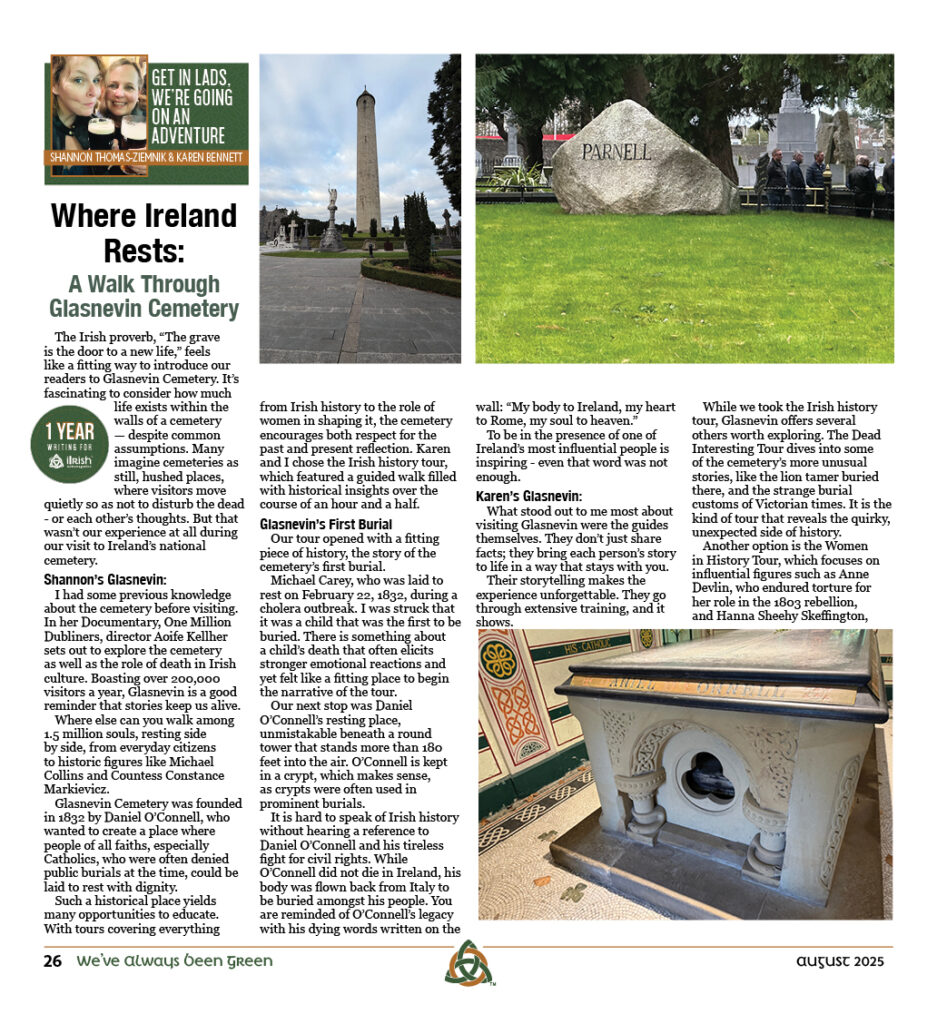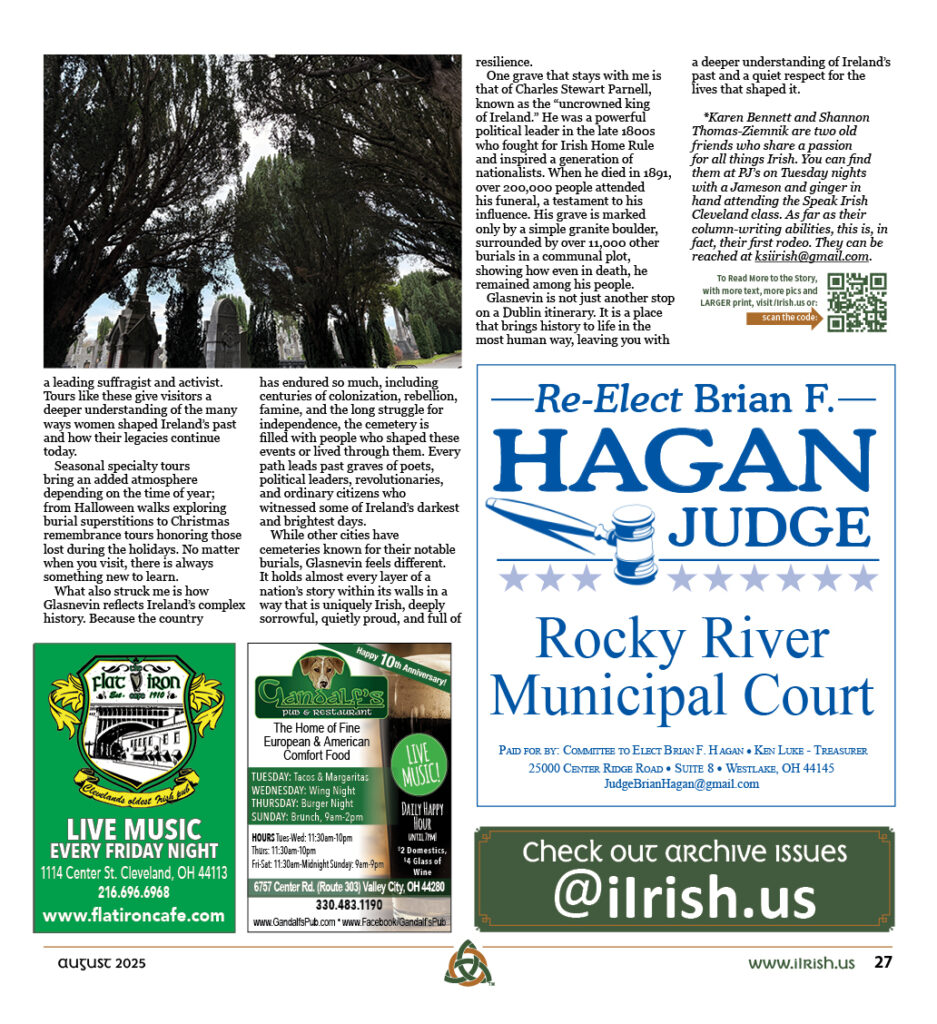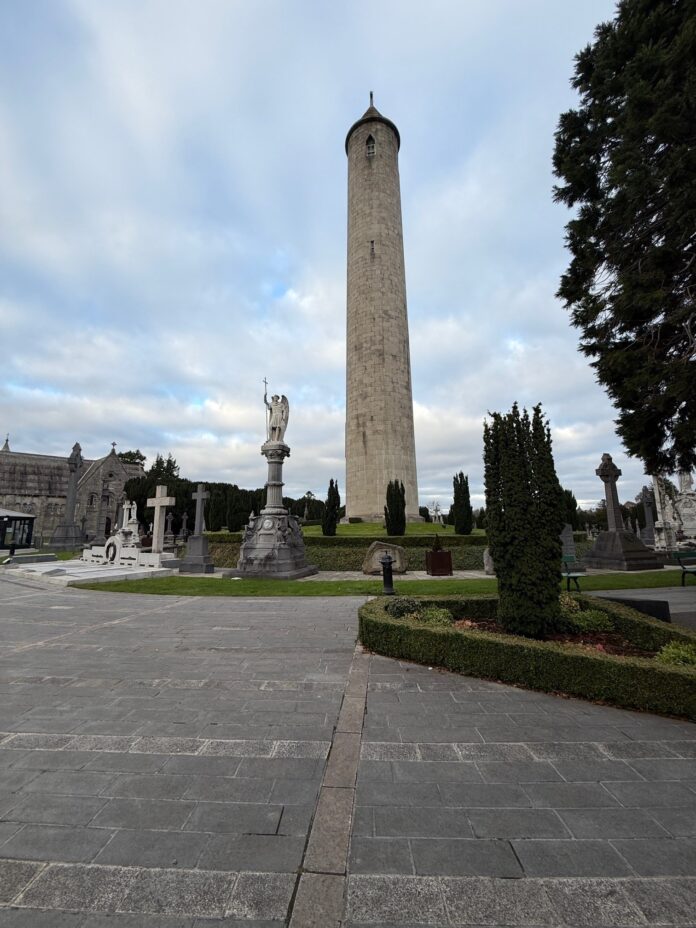
Where Ireland Rests: A Walk through Glasnevin Cementary
The Irish proverb, “The grave is the door to a new life,” feels like a fitting way to introduce our readers to Glasnevin Cemetery. It’s fascinating to consider how much life exists within the walls of a cemetery — despite common assumptions. Many imagine cemeteries as still, hushed places, where visitors move quietly so as not to disturb the dead – or each other’s thoughts. But that wasn’t our experience at all during our visit to Ireland’s national cemetery.
Shannon’s Glasnevin
I had some previous knowledge about the cemetery before visiting. In her Documentary, One Million Dubliners, director Aoife Kellher sets out to explore the cemetery as well as the role of death in Irish culture. Boasting over 200,000 visitors a year, Glasnevin is a good reminder that stories keep us alive.
Where else can you walk among 1.5 million souls, resting side by side, from everyday
citizens to historic figures like Michael Collins and Countess Constance Markievicz.
Glasnevin Cemetery was founded in 1832 by Daniel O’Connell, who wanted to create a
place where people of all faiths, especially Catholics, who were often denied public
burials at the time, could be laid to rest with dignity.
Such a historical place yields many opportunities to educate. With tours covering
everything from Irish history to the role of women in shaping it, the cemetery encourages both respect for the past and present reflection. Karen and I chose the Irish history tour, which featured a guided walk filled with historical insights over the course of an hour and a half.
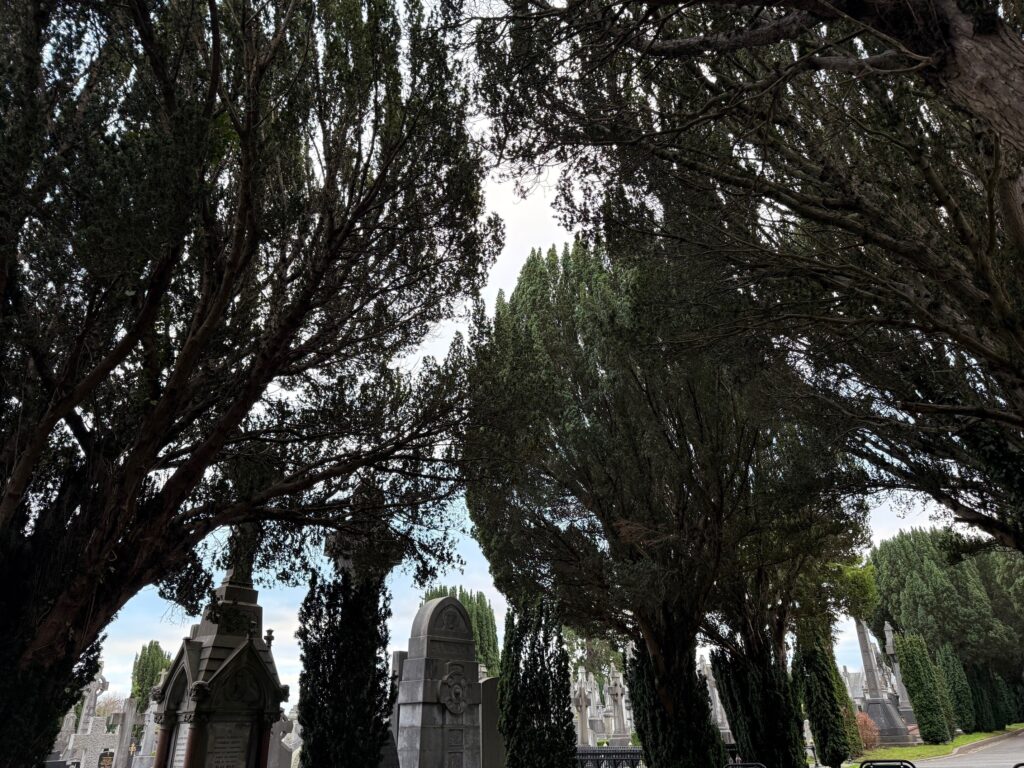
Glasnevin’s First Burial
Our tour opened with a fitting piece of history, the story of the cemetery’s first burial. Michael Carey, who was laid to rest on February 22, 1832, during a cholera outbreak. I was struck that it was a child that was the first to be buried. There is something about a child’s death that often elicits stronger emotional reactions and yet felt like a fitting place to begin the narrative of the tour.
Our next stop was Daniel O’Connell’s resting place, unmistakable beneath a round tower that stands more than 180 feet into the air. O’Connell is kept in a crypt, which makes sense, as crypts were often used in prominent burials.
It is hard to speak of Irish history without hearing a reference to Daniel O’Connell and his tireless fight for civil rights. While O’Connell did not die in Ireland, his body was flown back from Italy to be buried amongst his people. You are reminded of O’Connell’s legacy with his dying words written on the wall: “My body to Ireland, my heart to Rome, my soul to heaven.
To be in the presence of one of Ireland’s most influential people is inspiring – even that word was not enough.
Karen’s Glasnevin
What stood out to me most about visiting Glasnevin were the guides themselves. They don’t just share facts; they bring each person’s story to life in a way that stays with you.
Their storytelling makes the experience unforgettable. They go through extensive training, and it shows.
While we took the Irish history tour, Glasnevin offers several others worth exploring. The Dead Interesting Tour dives into some of the cemetery’s more unusual stories, like the lion tamer buried there, and the strange burial customs of Victorian times. It is the kind of tour that reveals the quirky, unexpected side of history.

Another option is the Women in History Tour, which focuses on influential figures such as Anne Devlin, who endured torture for her role in the 1803 rebellion, and Hanna Sheehy Skeffington, a leading suffragist and activist. Tours like these give visitors a deeper understanding of the many ways women shaped Ireland’s past and how their legacies continue today.
Seasonal specialty tours bring an added atmosphere depending on the time of year; from Halloween walks exploring burial superstitions to Christmas remembrance tours honoring those lost during the holidays. No matter when you visit, there is always something new to learn.
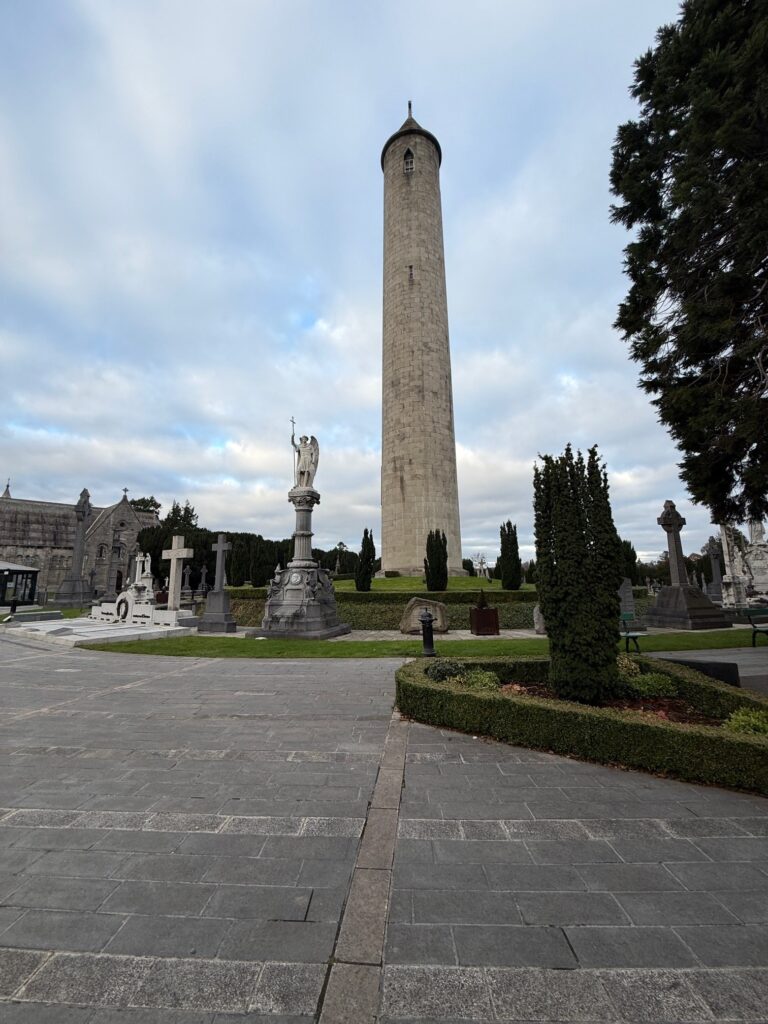
What also struck me is how Glasnevin reflects Ireland’s complex history. Because the country has endured so much, including centuries of colonization, rebellion, famine, and the long struggle for independence, the cemetery is filled with people who shaped these events or lived through them. Every path leads past graves of poets, political leaders, revolutionaries, and ordinary citizens who witnessed some of Ireland’s darkest and brightest days.
While other cities have cemeteries known for their notable burials, Glasnevin feels different. It holds almost every layer of a nation’s story within its walls in a way that is uniquely Irish, deeply sorrowful, quietly proud, and full of resilience.
One grave that stays with me is that of Charles Stewart Parnell, known as the “uncrowned king of Ireland.” He was a powerful political leader in the late 1800s who fought for Irish Home Rule and inspired a generation of nationalists. When he died in 1891, over 200,000 people attended his funeral, a testament to his influence.
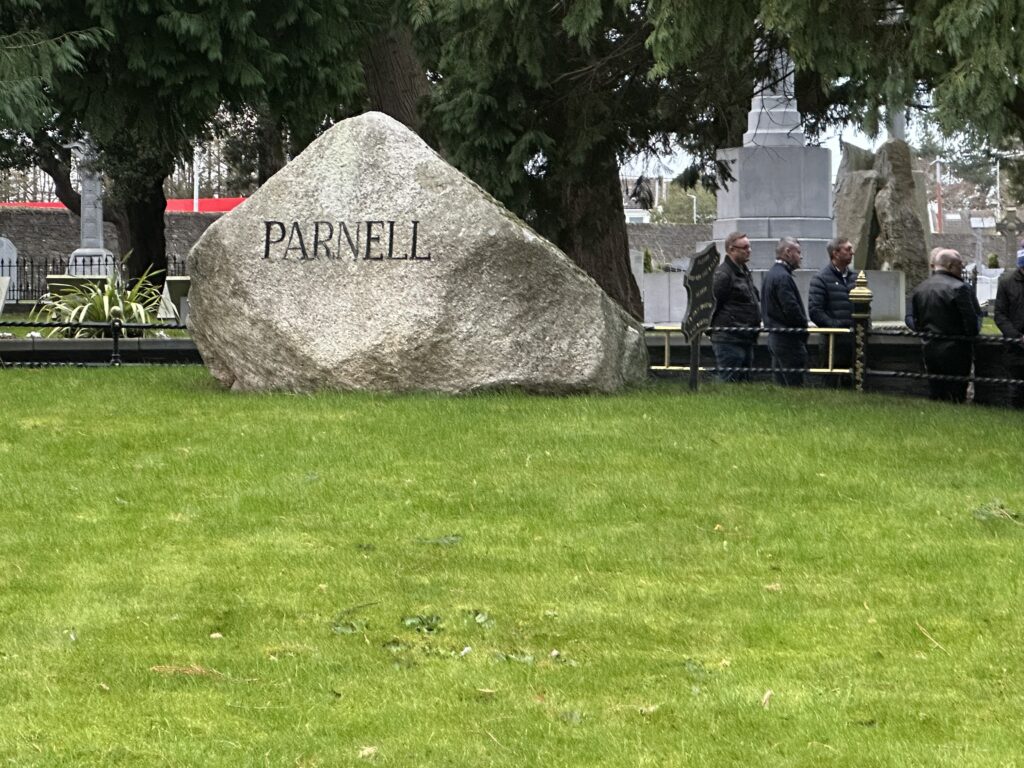
His grave is marked only by a simple granite boulder, surrounded by over 11,000 other burials in a communal plot, showing how even in death, he remained among his people. Glasnevin is not just another stop on a Dublin itinerary. It is a place that brings history to life in the most human way, leaving you with a deeper understanding of Ireland’s past and a quiet respect for the lives that shaped it.
